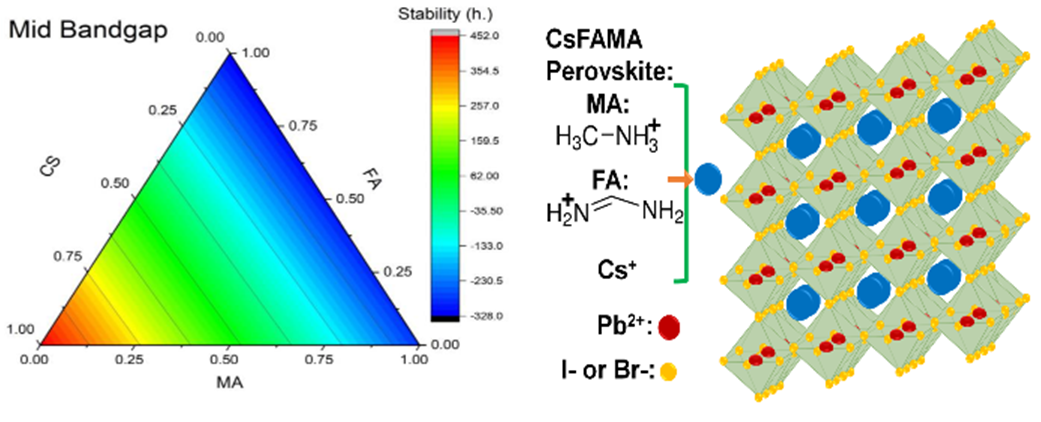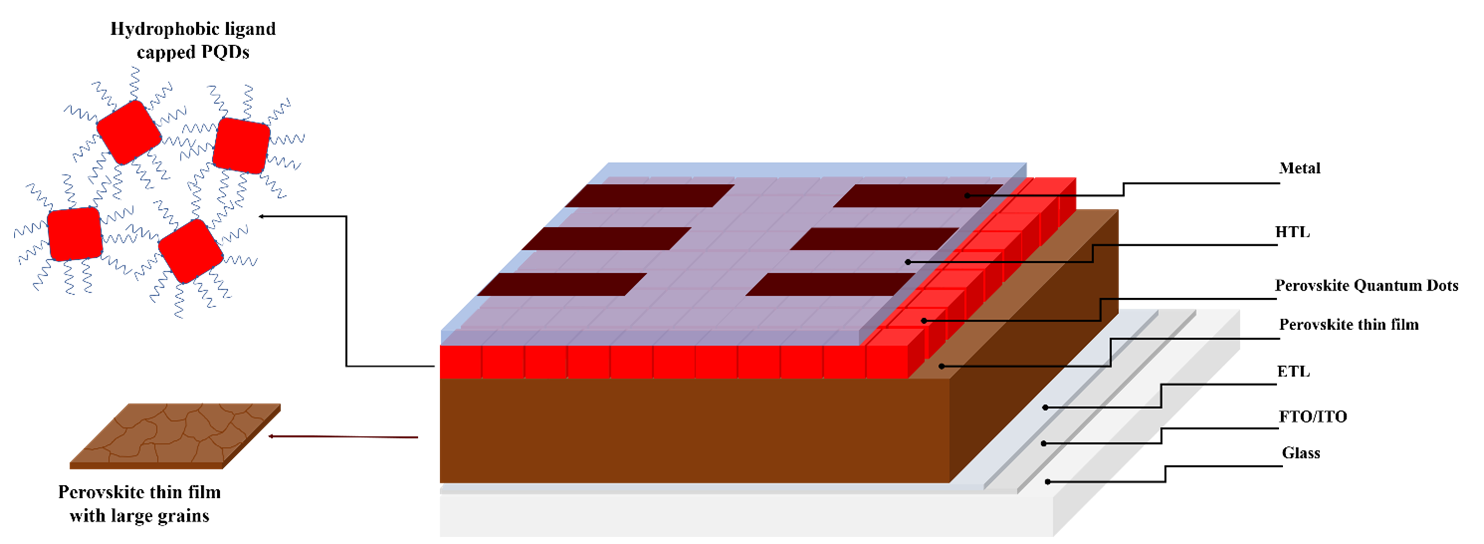Perovskite Solar Cells
As far as the energy harvesting is concerned, the halides with perovskite architecture have emerged as the most promising photovoltaic materials which are cheap, scalable and solution processible. Even though power conversion efficiency (PCE) greater than 25% is achieved, the photo, thermal and moisture stability of these materials is far lower (less than 2 years) compared to other commercial PV technologies such as silicon PV (30 years).
The primary objective of the DST-IIT Kanpur CRADMET center will be to design materials for energy harvesting by employing quantum and classical mechanics-enabled atomistic simulations and AI&ML algorithms. We will scan a large compositional and configurational space for predicting new materials for low-cost clean energy materials and for efficient energy harnessing. We will also employ compositional engineering of the perovskite material to improve both efficiency and the stability of the PSC. Small molecule and polymer-based additives will be incorporated to improve perovskite crystallization, passivation of defects in the bulk and/or at the surface, and can also tune the energetics and the structure of the interface for increased ambient stability.
We will also work towards the development of low-cost, thermally and chemically robust transport materials, both hole and electron transport layers based on metal oxides to improve the thermal and photostability of the resulting solar cells. Automated advanced optical and electrical characterization and analysis of the perovskite solar cells will be performed to study and elucidate the materials degradation mechanism. The materials and device characterization data will be fed into AI/ML algorithm to predict environmentally robust compositions, that will be synthesized using automated and roboticized processing flow.




